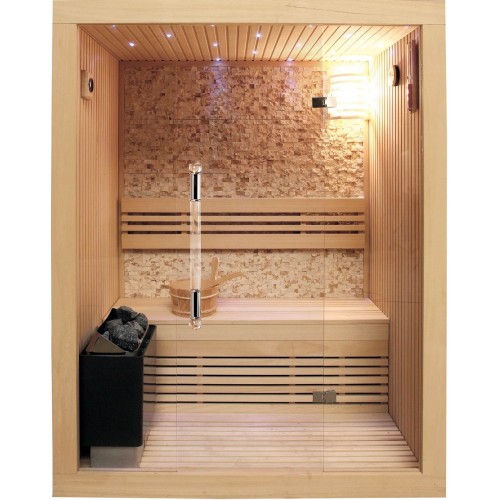The Buzz on Traditional Sauna
Getting My Traditional Sauna To Work
Table of ContentsExcitement About Traditional SaunaWhat Does Traditional Sauna Mean?A Biased View of Traditional SaunaAll about Traditional SaunaAn Unbiased View of Traditional Sauna
A lot of the weight shed in a sauna is water loss and is re-gained upon rehydrating. Without a question sauna can be an important component of a healthy weight loss program. To look at the differences between standard and IR saunas, I will divide these into proven, theoretical, and fabricated distinctions.Therefore, the hottest factor in the saunawhich is at the ceiling straight above the sauna heateris typically in between 185 and 190 F. Claims that a standard sauna surpasses 200 F is simply not true and not suitable for electric saunas offered in the US. The temperature level for a far-infrared sauna is typically established between 120 and 140 F; nonetheless, unlike the conventional sauna, the objective in and IR room is not to attain a high temperature level.
As a result of this, the temperature level difference is nearly unimportant, given that profuse sweating leads to both sauna kinds, but the approach of heating the body is different. In an IR sauna the bather will certainly really feel hot and will certainly sweat a lot, but at much lower temperatures (Traditional Sauna). Hence, if the goal is to spend longer durations of time in the sauna, the IR sauna is a great choice
When a standard sauna has been appropriately warmed, the sauna walls are warm, the air temperature has actually attained set temperature and the rocks are incredibly heated. As an intriguing side note, the heated wall surfaces and the rocks are emitting far-infrared warm, integrated with the warmed air, to develop an "wrapping up heat".
A Biased View of Traditional Sauna

When the heat is attained, the components cycle on and off to keep the high temperature level. A lot of standard sauna users enjoy putting water over the rocks to produce steam to elevate sauna moisture levels. The benefits of putting water over the rocks consist of: making the space more comfy, moistening the nasal flows, and enabling the use of aromatherapy by blending necessary oils with the water.

When the power enters the body, it creates the body temperature to boost and inevitably leads to sweat. In an infrared sauna it is essential for the emitters/heaters to stay on almost regularly. Since there is other no mass of rocks to preserve heat, the sauna will cool if the emitters shut off.
As mentioned above, the sauna bather in an infrared area intends to position himself before running emitters to obtain maximum benefit from the heat. The heating time for the 2 rooms can be very different, relying on how the rooms are utilized. For a typical sauna, a bather should enable 30-40 mins for the space to attain a desired temperature and to correctly pre-heat the rocks.
Traditional Sauna - Truths
A well constructed sauna will typically achieve a temperature of 150-160 F in about 30-40 minutes. For hotter temperatures, the room may require to warmth for a longer duration. As soon as the area attains established temperature level, the heating system will certainly cycle on and off, commonly running about 50% of the time. The shielded wall surfaces and the warmed rocks will keep the room warm and at steady temperatures.

Traditional saunas often tend to be larger (hence utilize more electrical energy) than infrared saunas, although standard saunas are absolutely readily available in one and 2 person dimensions as well. For a two-person traditional sauna, 5x6 or 5x7 size is most preferred. continue reading this The top bench can comfortably seat two or three individuals and is also long sufficient to relax during the sauna session.
An Unbiased View of Traditional Sauna
The average price per kWH of electrical energy in the united state is roughly $0.11, so a 4.5 kW heating unit will certainly set you back roughly $.50 to compete one hour, if the heating unit runs constantly for one hour. Commonly a sauna heating unit will certainly run for 75% of the very first hour and 50% of subsequent hours on since the elements cycle once look what i found the established temperature level is achieved.

There is a hardly ever reviewed difference in the social experience between the two areas. While our society has shed several of the social advantage of the traditional sauna experience, it can be very socially gratifying (Traditional Sauna). From family time in the sauna, to heart-felt discussions with loved ones, to sauna partiesthe traditional sauna experience can lead to intimate socializing
About Traditional Sauna
A lot of greater end infrared areas include tinted light treatment, noise systems and full-glass fronts.